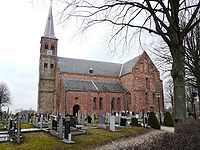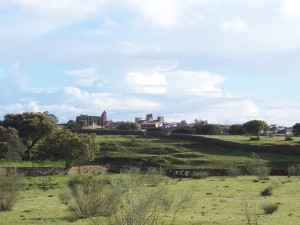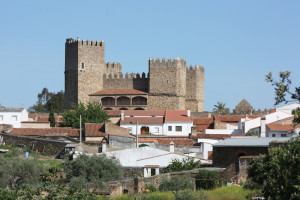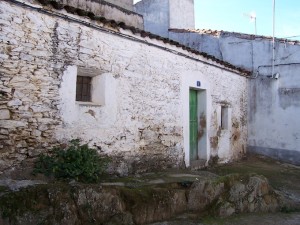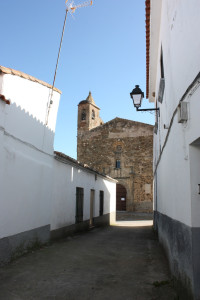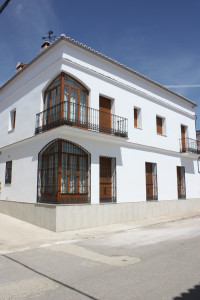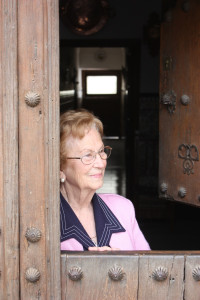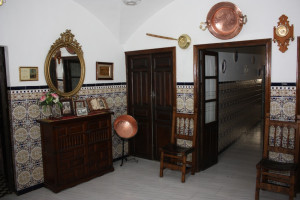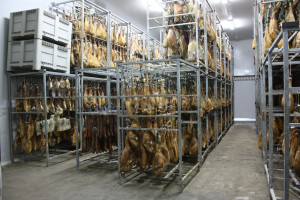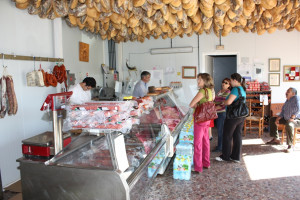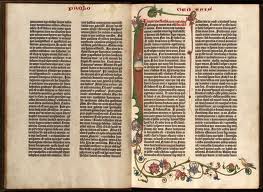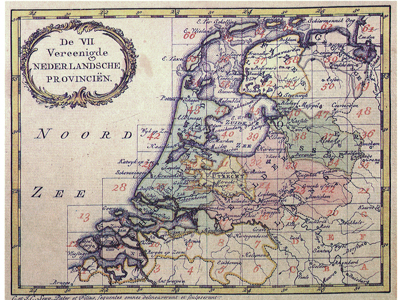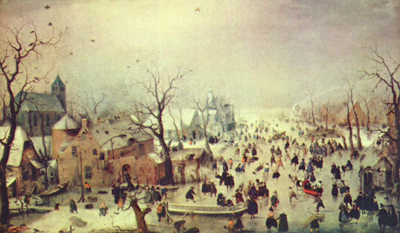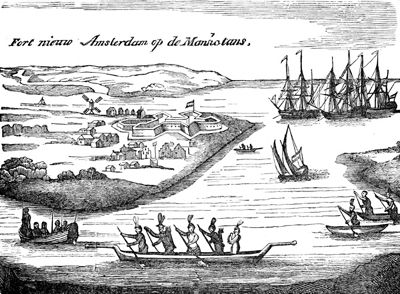The Constitution, Negotiation and Representation of Immigrant Student Identities in South African Schools
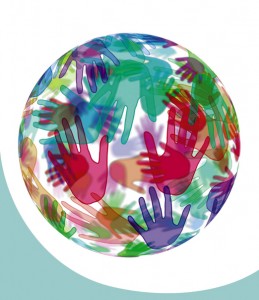 ‘Think, instead of identity as a “production” which is never complete, always in process, and always constituted within, not outside representation’ (Hall, 2000).
‘Think, instead of identity as a “production” which is never complete, always in process, and always constituted within, not outside representation’ (Hall, 2000).
Abstract
The easing of legal and unauthorized entry to South Africa has made the country a new destination for Black immigrants. As this population continues to grow, its children have begun to experience South African schools in an array of uniquely challenging ways. For these immigrant youth, forging a sense of identity may be their single greatest challenge. Accordingly, this study asks how do immigrant students construct, negotiate, and represent their identities within the South African schooling context. Findings were multifold in nature.
First, although immigrant students’ ease of assimilation into the chosen reference group was to some degree sanctioned by their phenotypic racial features, their attempt at ‘psychosocial passing’ was politically motivated. Second, immigrant students did not readily classify themselves according to skin pigmentocracy. Third, the majority of immigrant students heightened their ethnic self-awareness in forming their identity, but also assumed hyphenated identities. Fourth, immigrant students were not seen as having an identity, but rather as being ‘plugged into a category with associated characteristics or features’. Fifth, immigrant students forged a ‘continental identity’. And sixth, the selfagency of immigrant students was twofold in nature; not only did they want to improve their own condition, but there seemed to be an inherent drive to improve the human condition of others.
Introduction
The demise of formal apartheid has created new and as yet only partially understood opportunities for migration in South Africa. One of the most notable post-apartheid shifts is the sheer volume and diversity of human traffic now crossing South Africa’s borders. South Africa is increasingly host to a truly pan-African and global constituency of legal and undocumented migrants.
Legal migration from other Southern African Development Community (SADC) countries, for example, increased almost tenfold since 1990 to over four million visitors per year. South Africa’s (re)insertion into the global economy has also brought new streams of legal and undocumented migrants from outside the SADC region and new ethnic constellations within. The easing of legal and unauthorized entry to South Africa has made the country a new destination for African asylum-seekers, long-distance traders, entrepreneurs, students, and professionals (Bouillon 1996; Saasa 1996; Rogerson 1997a; de la Hunt 1998; Perbedy & Crush 1998b; Ramphele 1999; Klotz, 2000). Consequently, traditional forms of migration are being reconfigured and new forms of migrant linkage are emerging with traditional neighbours (Crush et al. 1991). These reconfigured and new forms of migrant linkages hold serious implications for immigrant children in South African schools as the dynamics of belonging is no where so harsh as it is as in the day-to-day activities on the classroom floor and in the schoolyard. Many scholars claim that the structure of immigrant students’ journeys to their new homes follows multiple pathways that are motivated by a variety of factors, namely, relief from political, religious, or ethnic persecution; economic incentives; as well as the opportunity to be reunited with family members (Berry, 1997; Suarez-Orozco & Suarez-Orozco, 2001). Furthermore, these scholars argue that immigrant students are stripped of many of their sustaining social relationships as well as the social roles that provide them with culturally scripted notions of how they fit into the world, which often results in acculturative stress (Berry, 1997; Suarez-Orozco & Suarez-Orozco, 2001).
‘For these immigrant youth, forging a sense of identity may be their single greatest challenge. Do they feel comfortable in their homeland? Do they feel accepted by the “native-born” of the host country? What relationship do they have with their parents’ country of origin? Is their sense of identity rooted “here”, “there”, “everywhere”, or “nowhere”’ (Suarez-Orozco, 2001:176)? How do they forge collective identities that honour both their parents’ culture of origin as well as their new home in South Africa? How can they develop a sense of belonging while coping with the dissonance of ‘excluded citizenship’ (Suarez-Orozco, 2004)?
Since the advent of democracy in South Africa, most public schools in South Africa in addition to opening their doors to all South African children irrespective of race, colour, or creed, have also opened their doors to a number of [black] immigrant children. There is however, very little research on the ways in which immigrant student identities2 are framed, challenged, asserted, and negotiated within the dominant institutional cultures of schools. Accordingly, this study asks how do immigrant students construct, negotiate, and represent their identities within the South African schooling context. Are new forms of immigrant students’ self-identities beginning to emerge? The argument is presented as follows. I begin by sketching the background context of the study. This is followed by a review of the literature that informs research on immigrant students’ identities. Conceptual markers and theoretical groundings of this research study are subsequently presented. I then describe the design and sampling of this research study. Findings in the form of emergent themes from interviews and observations of immigrant students are then presented. I conclude with an analysis and discussion of findings, and examine ways in which immigrant students’ identities are constituted, negotiated, and represented within the South African schooling context.
Background Context
To date, studies in this field have focused mainly on the black and white dynamics of South African students. There is very little, if any, research on the experiences of [black] immigrant students within South African schools. In much of the research on hybridity and transculturalisation, the important role of schooling as a mediating force in identity-making processes has also received little attention. Schools, through both formal and informal relationships, represent powerful interpretations of what it means to be ‘South African’, ‘Mozambican’, or ‘Zimbabwean’, that is, of belonging and nonbelonging. This research study sets out to explore how [black] immigrant students construct, mediate, and negotiate their identity within South African schools. The context of this study was limited to the Gauteng3 province of South Africa.
The central cities of Gauteng have some of the largest numbers of Black immigrants, who are diverse not only in terms of national origin, but by ethnic affiliation, cultural tradition, and generational status. The majority of Black immigrants in the Gauteng province of South Africa are from Mozambique, Lesotho, Zimbabwe, Democratic Republic of Congo, Swaziland, Botswana, Angola, and Malawi, but substantial numbers of immigrants also come from Zambia, Pakistan, Nigeria, Namibia, India, Kenya, Somalia, Uganda, Ruwanda, Ethiopia, Sri Lanka, Tanzania, and Mauritius (Gauteng Department of Education, Ten day statistics – 2008). As this population continues to grow, its children have begun to experience South African schools in an array of uniquely challenging ways. As a result of these demographic trends, researchers have increased their focus on how Black immigrant youth fare once in South African schools. Some of the data capture of this research study occurred during the height of the xenophobic attacks in South Africa (Hassim, Kupe, & Worby, 2008). Larger societal tension fuelled by sensationalistic media attention had much more saliency in the formation of immigrant student identities, and in everyday interactions between South African and immigrant students at schools. The perpetrators of the violence in May explicitly targeted the makwerekwere. 4 These xenophobic attacks illustrated violent verbal and physical acts being directed towards Black immigrants by their Black South African counterparts who often erroneously perceived their Black immigrant peers’ lack of familiarity with so-called ‘South African norms’ as intentionally distancing themselves from Black South Africans and related anti-Black South African arrogance. This ‘shack on shack violence’ (Hassim, Kupe, & Worby, 2008:16) was distinctive in several respects (Verryn, 2008). First, the attacks were on black foreign nationals. There is no record as far as any whites or Indians being caught up in these attacks. Second, it was mainly the poorer and more vulnerable foreign nationals that were exposed to the most vicious onslaught. Third, at least a third of the people killed were South African. And fourth, the violence was visited on the particularly marginalised of society, taking on ethnic and xenophobic connotations.
The Architecture of Identity
Theorizing Identity
A number of scholars claim that identity goes through a variety of permutations during adolescence as the individual experiments with different identity strategies (Phinney & Ong, 2007; Suarez-Orozco, 2004; Sirin & Fine, 2008; Murrell, 1999; Marcia et al., 1993; Marcia 1980; Parham 1989). Some argue that all youth move steadily from a stage of ethnic or ‘racial unawareness’ to one of ‘exploration’ to a final stage of an ‘achieved’ sense of racial or ethnic identity (Marcia, 1966; Erikson, 1968). Others point out that the process of identity formation is, rather than linear, more accurately described as ‘spiralling’ back to revisit previous stages, each time from a different vantage point (Parham, 1989). Yet, others claim that identity is ‘an internal selfconstructed, dynamic organisation of drives, abilities, beliefs, and individual history’ (Marcia, 1980:159), which facilitates psychological differentiation from others. A sense of emerging identity characterised by ‘a flexible unity’, that makes an individual less likely to rely on others views and expectations for self-definition.
Suarez-Orozco (2004:177) challenges the view held by Erikson and argues that identity formation is not simply a process, by which one passes through a variety of stages on the way to achieving a stable identity. Rather it is a process that is fluid and contextually driven. The social context is essential in predicting which identity is constructed (Suarez-Orozco, 2000). Many immigrant youth today are articulating and performing complex multiple identifications that involve bringing together disparate cultural streams. Immigrant students are constantly reinventing and rediscovering themselves through interactions in social structures, particularly peer reference groups and institutionally circumscribed roles, values, and ideologies. Among these social worlds, inconsistencies in the codes, values, roles, or expectations add to the difficulty of identity development (Suarez-Orozco, 2004). Identity is thus ‘socially constructed’. It is an interaction between an internal psychological process and an external process of categorisation and evaluation imposed by others. The social context is thus essential in predicting which identity is constructed (Suarez-Orozco, 2000).
Negotiating the Currents of a Complex Society
Negotiating the currents of identities for immigrant students can be particularly complex. The pathways they take, and the identities they form are determined in multiple ways. Resources, experiences, stresses, and trauma, as well as the coping strategies that immigrant students bring with them, play a key role. Critical to the formation of their identities is the structural and attitudinal environment, within which they find themselves (Suarez-Orozco & Suarez-Orozco, 2001; Taylor, 1994). Immigrant students must not only deal with aspects of personal development shared by all adolescents (relationships, work choices, examining values) but also often confront culture-related differences concerning these choices. They must also seek to create a sense of identity through personal choices surrounding relationships, occupation, worldviews, and values, which sometimes may conflict with parental and other family expectations (Murrell, 1999; Dion, 2006).
The single greatest developmental task of adolescence is to forge a coherent sense of identity (Erickson, 1964). Erickson (1964) argued that for optimal development, there needs to be a certain amount of complementarity between the individual’s sense of self and the varied social milieus he or she must traverse. However, in an increasingly fractured, heterogeneous, transnational world, there is much less complementarity between social spaces (Suarez-Orozco, 2000). The ethos of reception plays a critical role in the adaptation of immigrant students (Suarez-Orozco & Suarez-Orozco, 2001). Although the structural exclusion suffered by immigrants and their children is tangibly detrimental to their ability to participate in the opportunity structure, prejudicial attitudes and psychological violence also play a toxic role (Taylor, 1994). One of the ways in which this plays out is that of the social mirror (Suarez-Orozco, 2000). When the reflected image is generally positive, the individual is able to feel that she is worthwhile and competent. When the reflection is generally negative, it is extremely difficult to maintain an unblemished sense of self-worth. The social mirror creates the fertile conditions for what Du Bois (1903/1989) termed ‘double-consciousness’ to thrive.
‘Double-consciousness’ is a complex and constant play between the exclusionary conditions of social structure marked by race and the psychological and cultural strategies employed by the racially excluded and marginalised to accommodate themselves to every indignities as well as to resist them (Essed & Goldberg, 2002).
One way of overcoming the effects of the social mirror is that of psychosocial passing. ‘Psychosocial passing’ refers to people who seek to render invisible the visible differences between themselves and a desired or chosen reference group. By behaving in ways that are consistent with other group members, they subconsciously seek to avoid having their differences noticed. Phenotypic racial features have considerable implications for the ease of assimilation. In this era of globalisation immigrants, ability to ‘pass’ or be fully assimilated unnoticed is no longer possible for most new arrivals and this can lead to undue stress (Berry, 1997; Nesdale, Rooney, & Smith, 1997; Suarez-Orozco, 2000). Identities of immigrant students manifest themselves within the context of social worlds in numerous and multiple forms, namely Achieved or an Ascribed [imposed] Identities (Suarez-Orozco, 2004; Suarez-Orozco & Suarez-Orozco, 2001; Suarez-Orozco, 2000; Helms, 1990; DeVos, 1980); Performing Identities (Maestes, 2000; Waters, 1886); Global Identity (Arnett, 2002); Dominating Identities (Murrell, 1999); Ethnic Identities (Phinney & Ong, 2007); and Hyphenating and Perforating Identities (Sirin & Fine, 2008).
Furthermore the identity pathways or styles of adaptation of immigrant students differ. Suarez-Orozco and Suarez-Orozco (1995) noted that youth attempting to traverse discontinuous cultural, political, and economic spaces tended to gravitate towards one of the dominant styles of adaptation: ‘ethnic flight’, ‘adversarial’, ‘bi-cultural’, and ‘transcultural’. These styles are not fixed or mutually exclusive. ‘Ethnic flight’ is characterised by immigrant students who willingly attempt to symbolically and psychologically dissemble and gain distance from their families and ethnic groups. The ‘adversarial style’ is characterised by immigrant students who structure their identities around a process of rejection by institutions of the dominant culture. These youths respond to negative social mirroring by developing a defensively pppositional attitude and are likely to act out behaviourally (Aronowitz, 1984; Garcia-Coll & Magnuson, 1997). The ‘bi-cultural style’ deploys what is termed ‘transnational strategies’. These children typically emerge as ‘cultural brokers’, mediating the often conflicting cultural currents of home culture and host culture (Suarez-Orozco, 1989; Suarez-Orozco & Suarez-Orozco, 1995). The ‘transcultural style’ is characterised by youth who creatively fuse aspects of two or more cultures – the parental tradition and the new cultures. In so doing, they synthesize an identity that does not require them to choose between cultures but rather allows them to incorporate traits of different cultures while fusing additive elements (Falicov, 2002).
Theoretical Moorings
The problem of identity has been theorised through different competing paradigms. The two most relevant theoretical frameworks that have a bearing on this research study are Critical Race Theory (CRT) and Hall’s (Grossberg, 1996) figures of identification. CRT provides a theoretical framework, through which individually and institutionally motivated racist acts can be highlighted, critiqued, and corrected (Tate, 1993; Ladson-Billings & Tate, 1995; Crenshaw et al., 1995; Lynn, 1999; Tyson, 2003). It distinguishes between individual racism and institutional racism. CRT is an important construct for understanding Black immigrants who have made South Africa their home. It sheds light on the fact that Black immigrants are racialised as Black in South Africa, despite their varied self-identification on the basis of nationality, ethnicity, language, and other cultural signifiers, and are therefore subjected to the same racial prejudices and discrimination as their native Black counterparts. The concern of critical race theory is to re-narrativise the globalisation story in a way that places historically marginalised parts of the world at the centre rather than the periphery of the education and globalisation debate, and, thus, ultimately to bring about social change (Amnesty International, 2000). Scholars across disciplines have identified several dominant and unifying themes that describe the basic tenets of CRT (Velez et al., 2008; Yosso, 2006; Tyson, 2003; Lynn, 1999; Crenshaw et al., 1995; Ladson-Billings & Tate, 1995; Delgado & Stefancic, 1993; Tate, 1993).
First, race is a social construct, not a biological phenomenon. It is not rooted in biology or genetics but is instead a product of social contexts and social organisations. The construct of races involves categories that society creates, revises, and retires as needed. Second, racism is endemic to life and should not be regarded as an aberration. Socially constructed racial categorisations are a fundamental organising principle of society. Individual, cultural, and institutional expressions of racism reflect the racial stratification that is part of the fabric of society. Race and racism is part of the dominant cultural ideology that manifests in multiple contexts, and are central and defining factors to consider in understanding individual and group experience. Third, racism benefits those who are privileged and serves the interests of the powerful to maintain the status quo with respect to racial stratification. Fourth, CRT represents a challenge to the dominant social ideology of colour-blindness and meritocracy. Race neutrality and the myth of equal opportunity ignore the reality of the deeply embedded racial stratification in society and the impact it has on the quality of life. Fifth, racial identity and racial identification are influenced by the racial stratification that permeates society. The perceived salience of race, the significance of racial and ethnic group membership to the self-concept, the degree to which racial and ethnic heritage and practices are embraced or rejected, and the affiliations and identifications that are made within and outside of one’s own racial and ethnic group are all influenced by the dominant cultural narrative of superiority. Sixth, assimilation and racial integration are not always in the best interests of the subordinated group. Seven, CRT considers the significance of within-group heterogeneity and the existence of simultaneous, multiple, and intersecting identities. This is often referred to as anti-essentialism or inter-sectionality. All people have overlapping identities and multiple lenses through which the world is experienced.
CRT challenges the idea that any person has a uni-dimensional identity within a single category (e.g., race or ethnicity) or that racial groups are monolithic entities. Eight, CRT argues for the centrality, legitimacy, and appropriateness of the lived experience of racial or ethnic minorities in any analysis of racial stratification. CRT has advocated for marginalised people to tell their often unheard and unacknowledged stories, and for these perspectives to be applied to the existing dominant narratives that influence the law. Ninth, CRT insists on a contextual analysis by placing race and racism in a cultural and historical context, as well as a contemporary socio-political context. And, tenth, the ultimate goals of CRT are to inform social justice efforts and the elimination of racial oppression. The figures of identification as propounded by Hall (1996) comprise Difference, Fragmentation, Hybridity, Border, and Diaspora. The figure of Difference is constituted by the logic of difference through which the subject is constructed as an ‘adversarial space’ living in ‘anxiety of contamination by its other’ (Huyssen, 1986: vii). The figure of Fragmentation emphasises the multiplicity of identities and of positions within any apparent identity (Haraway, 1991).
Identities can, therefore, be contradictory and are always situational… we are all involved in a series of political games around fractured or decentered identities… since black signifies a range of experiences, the act of representation becomes not just about decentering the subject but actually exploring the kaleidoscopic conditions of blackness (Hall, 1992:21).
The figure of Hybridity is used synonymously with the other figures. Hall (1996) uses it to describe three images of border existences of subaltern identities existing between two competing identities. Images of a ‘third space’ (Bhabha), literally of defining an ‘in-between place inhabited by the subaltern’. Images of ‘liminality’ collapse the geography of the third space into the border itself, the subaltern lives, as it were, on the border. Images of ‘bordercrossing’ mark an image of ‘between-ness’ out of which identities are produced. The Diaspora experience is defined by the recognition of a necessary heterogeneity and diversity; by a conception of ‘identity’ which lives with and through, not despite, difference; and by hybridity. Diaspora identities are those which are constantly producing and reproducing themselves anew, through transformation and difference.
Research Strategy
The research study was both exploratory and descriptive in nature. The overall school environment with particular reference to how immigrant students construct, negotiate, and represent their identity within the schooling context of South Africa was the unit of analysis. Particular emphasis was placed on the dynamics of institutional culture, and the climate of the school and the classroom. The research design was qualitative in nature, and the narrative method and case study approach was used. Three secondary schools located in the Gauteng province of South Africa provide the research sites for this study; a former white Model C school, a former Indian school, and an inner city school that had a majority of black immigrant learners. The rationale for selecting secondary school students is that these students are at the adolescent stage of their lives, where the selfcreation of one’s identity, which is often triggered by biological changes associated with puberty, the maturation of cognitive abilities and changing societal expectations, and the process of simultaneous reflection and observation is commonly experienced (Tatum, 1999). Criteria used in the selection of students were based on racial background and gender.
The data-gathering techniques that were used in this study included a mix of semi-structured interviews, observations, and field notes. Semi-structured interviews were conducted with a purposive sample of immigrant students to determine how their identities are constituted, negotiated, and represented in schools. The researcher selected approximately fifteen [black] immigrant students (Lesotho, Kenya, Nigeria, Malawi, Congo, Zimbabwe, Mozambique, India, Pakistan, Sri Lanka) across Grades 8 to10 at each school. The selection of immigrant students depended on the mixture that was found at each of the identified schools. An attempt was made to include both Anglophone and Francophone immigrant students in this study. A total of 45 students were interviewed. These interviews were conducted in 2008 over a period of six months. Questions comprised five to six broad categories and were openended.
The duration of interviews ranged between 1½ to 2 hours. All interviews were recorded and transcribed. Semi-structured interviews were conducted with the principal, the School Management Team, the School Governing Body, selected teachers of these Grades (8 -10), and parents of immigrant children at each of the three research sites to explore the phenomenon of immigrant student identities. Observations were conducted to coincide with the interview period. Researchers observed immigrant students over a period of six weeks at each school with a focus on their experiences of school life, and how it plays out on the classroom floor and on the school grounds. Observations of classroom practice, activities, and associations during the break sessions, assemblies, and other activities of the school, including after school activities, were captured. It must, however, be noted that there are advantages and limitations of observations at a small number of schools. The advantages of such a technique is that it provides a lens into the ‘lived experiences’ of classroom life over a period of time that allows for in-depth study and creates the opportunity for patterns (if any) to emerge. The limitation is that the small number of schools observations could be seen as instructive and illustrative, and not as representative of all schools.
In order to get a better feel of the schooling and learning environment, various field notes were written, based on informal observations of these schools (ethos, culture, and practices of the school). Informal conversations were conducted with some teachers. Attention was also given to the physical appearance of the school, which included observations of artefacts such as paintings, décor, photographs, portraits, and school magazines to provide a sense of the institutional culture of the school. Do immigrant students feel a sense of belonging and being at home at the school? Particular emphasis was on the experiences of immigrant students, and how they constructed, negotiated, and represented their identities within these schooling contexts, and how these contexts influenced their identity formation.
Data was analysed utilising qualitative content analysis (Mayring, 2000; Sandelowski, 2000). Codes were generated from the data and continuously modified by the researcher’s treatment of the data ‘to accommodate new data and new insights about those data’ (Sandelowski, 2000:338). This was a reflexive and an interactive process that yielded extensive codes and themes. The extensive codes were further analyzed to identify data related to key concepts in the research question, theoretical frameworks, and literature review (Miles & Huberman, 1994). Multiple readings of the data were conducted, organizing codes and themes into higher levels of categories within and across the interviews, observations, and other sources of data (Merriam, 1998).
Findings
Major findings that contrasted with what was found in the voluminous literature in this field were multifold in nature. First, although immigrant students’ ease of assimilation into the chosen reference group was to some degree sanctioned by their phenotypic racial features, their attempt at ‘psychosocial passing’ (Robinson, 1999) was politically motivated. They claimed that because of the political status of the host country, it was in their interest to ‘pass’ as local blacks, but they wanted to do this in terms of appearance only and nothing else. For many immigrant students, the behaviour and code of conduct of their local black peers in the host country represented a site of contamination and shame. The concept of ‘passing’ within the black community in the western world traditionally referred to blacks who pass for white because of their light skin colour (Wu, 2002). However, in the South African context this concept refers to black immigrant students who ‘pass’ for local black students because of similar phenotypic racialised features.
I can honestly say, I have not once noticed that the girls treat them any differently to a South African Zulu girl or a South African Xhosa girl or a South African Sotho girl, they look the same. It is really difficult to tell them apart physically (Ms Wilson, Grade 10 teacher).
They don’t really react badly because they say I look mostly like a South African, like a Venda. I don’t look like a foreigner. I mean I look like a Venda. So when I tell them I am from another country they actually get surprised (Effi, Zambia).
I fit in well, like the other South African Indians in this school. I speak English well, I don’t really have an ‘Indian’ accent so I am like one of them (Jeet, Pakistan).
Well they didn’t really see me as an immigrant; I was just like one of them. So I just let them go on believing that I am one of them. I don’t let them know that I am really an immigrant (Vena, Zimbabwean).
The ability to join the mainstream unnoticed is more challenging when one is racially marked. However, in the South African context the most discernible marker among black immigrant students was not one of race, but that of language and accent. In the case of black [African] immigrant students it was their lack of proficiency in indigenous languages that signalled their ‘foreignness’. Whereas with black [Indian] immigrant students, it was their lack of proficiency in English that made them conspicuous as foreigners. In both cases ‘accent’ in the use of the English language was the critical signifier of the ‘Other’. A secondary instantaneous indicator was that of ‘shades of blackness’. Indigenous black students could immediately recognise black [African] immigrant students by the ‘blackness of their skin pigmentation’. Wu (2002) argues that immigrants ability to ‘pass’ or be fully assimilated unnoticed is no longer possible for most new arrivals in this era of globalisation. Kevin who could physically identify with the local black students because of a similar ‘shade of blackness’, tried to desperately ‘pass’ as one of them by addressing his shortcoming in terms of learning an indigenous language.
He claims: I do not want to be identified by my culture. I look like South African black people. I have made an effort to learn Sepedi to try to fit in and to communicate with the local blacks so that they do not say I am a makwerekwere.
Immigrant students chose varied ways to present and orientate themselves in relation to others in the host country. What is important to note is that although the phenotypic features of many immigrant students allowed them to ‘pass’ for one of the local blacks, all immigrant students were resolute in maintaining their sense of moral integrity. Second, immigrant students did not readily classify themselves according to skin pigmentocracy. They initially identified themselves in terms of personality traits and subsequently in terms of ethnicity linked to culture, traditions, language, and country of origin. The label of ‘Black’ was something that was ascribed to them on entry into the host country and something that they learnt to incorporate as part of their identity, given that they shared similar phenotype features as indigenous black students, as evident from this vignette.
Interviewer: Would you class yourself according to colour?
Immigrant: Yes.
Interviewer: Who would you say you are?
Immigrant: I’m black; I’m African.
Interviewer: Why do you say you are an African?
Immigrant: Because I originate from Africa.
Interviewer: And why do you call yourself black?
Immigrant: Because that’s how we’re classified by the South African government.
Interviewer: And are you happy with that?
Immigrant: Not really, because I’ve heard so many people complain about being called black because our skin colour is naturally black.
Interviewer: So you won’t classify yourself as black in Zambia?
Immigrant: Me, no, no, no definitely not! I was not identified as ‘black’ in Zambia, but here I am told that I am ‘black’ because I look more like the local black Africans than like the Indians and whites.
Interviewer: In Zambia, how would you classify yourself?
Immigrant: As African.
Interviewer: Just African?
Immigrant: Yes. It is only when I came to South Africa that I realized that I’ve got another label, now I am a black African.
Interviewer: How does this make you feel?
Immigrant: I feel bad because I am not ‘black’ I am ‘African’… because I come from Africa. ‘I am not happy about being called black. I prefer being called African’. Also, my culture is totally different from theirs [black South Africans] and in my culture we are taught to respect and behave well. We also dress differently. There are so many differences with them, so how can people see me like one of them? I am just an African student in South Africa from Zambia… all these other labels; black and all that doesn’t get into my identity.
And another student’s response:
In Burundi we just say our culture and language, but when I came to South Africa I learnt that I am now ‘black’ (Andrew).
I am Zimbabwean and I’m black and I speak Kalanga…I say I am ‘black’ because when I came to South Africa I was told by the learners, teachers and the principal that I am black and I could also see that I look like the ‘black South Africans’. No, in Zimbabwe I was not ‘black’. I was just from the Kalanga tribe (Vena).
Third, the majority of immigrant students heightened their ethnic self-awareness in forming their identity, but also assumed hyphenated identities, as much as the hyphen was heavily skewed in favour of the country of origin. Immigrant students negotiated the balance and contours of the hyphen as they navigated their way through the social contexts of the host country:
I am Rwandan, but I am living now for 12 years in South Africa, so I’d say I am Rwandan but also becoming South African. I am a Rwandan-South African. [Sighs] I don’t… I wouldn’t say I’m a foreigner, no. I am a Congolese-South African, yes. I’m… who I am is two different cultures that play a huge, huge, impact on me and sadly I’m going say it’s more South African than Congolese people that have made me who I am. But because culture means a lot to me, I have to say I am Congolese-South African (Vanessa, DRC).
Fourth, immigrant students were not seen as having an identity, but rather as being ‘cast into a category with associated characteristics or features’. In terms of ‘Othering’ they were ascribed the group categorisation of ‘makwerekwere’. A further sub-categorisation process occurred within this group category and was based on ‘Shades of Blackness’, which further negatively influenced many immigrant students’ formation of social identities and their sense of belonging to groups. Students who come from Congo, Zambia, Somalia, and Malawi are naturally darker skinned than indigenous African learners. According to one of the principals:
They say this is a terrible thing which is part of our country, how dark the person is, because now South African students identify and discriminate against black immigrant students on the basis of darkness of skin colour because they say that person’s too dark to be South African. This places the immigrant child under much stress and the child feels isolated.
Some immigrant student responses in this regard:
They use my surname Dakkar to mock at me and they say I am dark. I am a makwerekwere and I must go back to Zambia. They say you are black, like you are black more than other learners; you must be Congolese or maybe you from Somalia? There was this one time we were arguing with some other people. So they were dissing me [slang: insult someone] and so I also dissed them and they say I’m dark. I must go back to Malawi and stuff.
Fifth, in order to counteract the social representation of being a foreigner, and to seek a sense of inclusion, many black [African] immigrant students forged a ‘continental identity’ to create a sense of solidarity with local black students. Thus, their identities became subjected to a process of evolution and modification within the new social context. There seemed to be an increasing emphasis on an ‘African’ identity:
In Zimbabwe, I was a Zimbabwean, but now they say Unapa is a makwerekwere. That’s not who I am. I am an African from Zimbabwe. I’m a Congolese girl from the DRC. They say I am a foreigner; a makwerekwere and they push me and say ‘Go back to your country’. I don’t see myself as a foreigner. I am an African from Africa (Jeanette, DRC).
Andrew was resolute in his thinking and preferred to present himself in relation to others in terms of a continental perspective. Since the context within which he now found himself forced him to be classified according to colour, he vehemently denied being ‘black’, instead he argued:
I do not classify myself as ‘black’ according to South African racial categories. I am ‘coffee brown’. I am an African since like them [South Africans] I too am from the continent of Africa. How can they [South Africans] call me a makwerekwere? (Andrew, Ghana).
And sixth, immigrant student self-agency was twofold in nature. They not only wanted to improve their own condition, as much of the literature in the field reports, but there seemed to be an inherent drive to improve the human condition of others. There was genuine concern and a form of empathy. They wanted to assist indigenous black students in the spirit of ‘brotherhood’ [we are the same we are all ‘Africans’] to improve the moral, academic, and social fibre of South African society.
I see a kind of deficiency in the attitude of learners. For me, this is something that I can use to build the school into a better school and make the learners see that what they are doing is wrong. The South African government is giving the youth too many rights. I mean like already at the age of 12 you can have an abortion. That is just wrong in the Bible and it is wrong as a person (Chanda, Zambia). I can’t say we really different, we look more or less the same except I am slightly lighter in colour then them but where we are different is in the attitude. The only difference is attitude. I’ll change them. I will want them to understand what education is really about and how to treat elders. They must really get to understand that (Kevin, Zimbabwe).
The black people the way they treat people. I don’t think we treat people the same way. I’d like to teach them about respect and how to treat people well (Athailiah, Mozambique).
Analysis and Discussion of Findings
The influence of race and the effects of racism on black immigrant students were glaringly visible in this research study. Black immigrants were racialized as Black and were, therefore, subjected to the same racial prejudices and discrimination as their indigenous black counterparts. The homogeneous categorization of Blacks ignores the important national, ethnic, linguistic, cultural, political, and even racial differences that exist within the population. In particular, homogenous descriptions ignore the fact that for many Black immigrant youth, racial and ethnic identities are fluid and complex; thus many do not strictly identify with the rigid and dichotomous Black/White constructs, through which racial and ethnic identities are based in South Africa. However, within the stream of ‘Blackness’ prejudices against particular nationalities and ethnicities were clearly evident. Indigenous Black students demonstrated little incentive to eliminate racism. From a CRT analysis, this feature is known as ‘interest convergence’ or material determinism (Crenshaw et al., 1995; Ladson-Billings & Tate, 1995). Efforts to eliminate racism occur only when the change will benefit the privileged group in some way. Both Black and Indian students did not perceive any benefit from the Black immigrant students, but viewed them as a threat. This tenet encourages an exploration of the role of societal need and power interests in a way that specific qualities are associated with particular racial groups.
In addition, many Black immigrant students experienced challenges in forming their identity in their very different home and school environments. They experienced difficulty in reconciling the expectations placed upon them by their traditional culture and those that hailed from South Africa, or the Eurocentric culture generally found in South African school settings. They thus took on hybrid and hyphenated identities as a measure of reconciling these disparate cultural streams. However, the hyphen assumed a skewed formation, as many black immigrant students leaned heavily on their ethnic identities that provided the foundation of their cultural and moral mores. This seemed to comply with Hall’s figure of Difference where the black immigrant student was constructed as an ‘adversarial space’ living in ‘anxiety of contamination by its other’ (Huyssen, 1986: vii). The multiplicity of identities and of positions within any apparent identity as characteristic of Hall’s figure of fragmentation was evident in the manner in which immigrant student identities manifested themselves. Black immigrant students were ascribed identities, namely ‘makwerekwere’, ‘black’, and were further cast into categories according to ‘Shades of Blackness’. Furthermore, they were ascribed identities according to the country of origin, namely Nigerians were categorised as thieves, womanisers, drug lords, and people who were unhygienic. Zimbabweans were ostracised because of the perception that they came from a poverty-stricken country that lacked resources and a country that would seem to be ‘uncivilised’ and ‘backward’. Dominating identities of immigrant students were very much in the form of an ethnic identity.
While at the same time there was overwhelming evidence of hyphenating and perforating identities. There was also a very strong association with a ‘Continental identity’. The emphasis on a ‘Continental identity’ by Black immigrant students was one way of counteracting the social representation of being a foreigner, and seeking a sense of belonging. Images of a ‘third space’ (Bhabha, 1990), literally of defining an ‘inbetween place inhabited by immigrant students’. And, images of ‘bordercrossing’, that mark an image of ‘between-ness’ out of which identities are produced, seemed to be the favoured options. The identity pathways of immigrant students leaned more towards the bicultural and transcultural styles of adaptation. None of the black immigrant students chose to willingly attempt to symbolically and psychologically dissemble and gain distance from their families and ethnic groups, nor did they opt for an adversarial style that centred on rejecting institutions of the dominant culture. They, however, rejected norms and values of South African culture; they just did not actively act out against it. In contrast, there seemed to be genuine empathy and a collective sense of ‘brotherhood’ with indigenous students, as evident from the manner in which their self-agency unfolded. Hence, the Diaspora experience was very much evident in the way immigrant students recognised the necessary heterogeneity and diversity; by a conception of ‘identity’ which lives with and through, not despite, difference; and by hybridity. Through this Diaspora experience, immigrant students constantly produced and reproduced themselves anew, through transformation and difference by subjecting their identities to a process of evolution and modification within the new social context, as evident from their increasing emphasis on an ‘African’ identity.
Conclusion
Reactions of indigenous students to Black immigrant students reflect the racial stratification that is part of the fabric of South Africa. In a CRT analysis, this endorses the tenet that races are categories society creates and that individual, cultural, and institutional expressions of racism are part of the dominant cultural ideology that manifests in multiple contexts. Current manifestations of racial stratification occur within a broader historical landscape that has shaped the present forms and expressions of racism. This research study uncovered both similarities and differences with what was found in the literature review. The similarities are that immigrant students in the South African context also have to contend with discrimination and harassment, but this is largely in terms of intra-black dynamics, while they struggle with issues of language, curriculum, and instructional strategies that do not address their cultural or linguistic background, and they feel a sense of alienation rather than one of belonging. These findings are in significant contrast with the literature in terms of the aspects of psychosocial passing, agency, identity, and language as a tool of exclusion. Black immigrant students have different stories to tell regarding the way race affects their life experiences. These stories have not had as significant an influence on policies, practices, and opinions as have the dominant cultural narratives about race. Black immigrant students have unique perspectives on racial matters and their voices speak of experiences involving marginalisation, devaluation, and stigmatisation. It becomes clear from these narratives that ‘South Africanness’ is not just a question of citizenship in official documentation. It is also about contests over the more concrete (and often mundane) daily requirements of life, and the territoriality and space that accompany them. It becomes imperative to not only acknowledge and recognise the heterogeneous constitution of black groups in South Africa but to incorporate the linguistic and cultural capital of these differing groups into the very fabric of schooling so as to ensure that all students feel a sense of belonging and feeling at home. It is only in this way that all students can truly become ‘cosmopolitan citizens’ of the world, guided by common human values. Research from the CRT framework should contribute to efforts to facilitate the empowerment of marginalised and disenfranchised groups, and to inform strategies for eliminating racism and other forms of oppression.
1 This chapter stems from a broader SANPAD-funded project on Immigrant student identities in South African schools. Parts of this chapter have already been published in Education Inquiry. Vol. 1 (4):347–365 and the Journal of Educational Development.
2 Identities – In this chapter the ‘multiple’ and ‘fluid’ identities that are addressed are those of race, ethnicity, nationality, language, and related identifi cations; not class and gender.
3 Gauteng – One of the nine provinces of South Africa.
4 Makwerekwere – people who were identified as not properly belonging to the South African nation. Makwerekwere is the derogatory term used by Black South Africans to describe non-South African blacks. It refers to Black immigrants from the rest of Africa.
—–
About the Authors:
Saloshna Vandeyar is an NRF C rated scientist and the recent award-winning scholar on intercultural education from the prestigious international BMW Awards in the category: theory. Her work has also received national recognition as evident from the other awards she has received, namely, Winner in the National Science and Technology Forum Award 2007 in the Category H: NRF Sponsored T W Kambule Award: Senior Black Researcher over the last 5 to 10 years; finalist in the category Education of the Shoprite Checkers/ SABC 2 Woman of the Year 2006; Exceptional Young Researcher’s award from the University of Pretoria; Gold medal for Research, Excellence and Achievement, University of Pretoria, and two Community awards for Excellence in Education and Research (2007/2009). She was also nominated for the social justice award (American Education Research Association) in 2009. She has authored and co-authored several books, journal articles and chapters in books. Her scholarly book, Diversity High: Class, Color, Culture and Characterin a South African school was nominated for the outstanding book award (AERA) in 2009 and her paper that was published in an international journal was nominated for the Joyce Cain award (2009). Her specialist areas and the foci of her research encompass Race, Identities, Social/cultural Justice, Diversity Education, Teacher Professionalism as well as Assessment Practices. She serves on the editorial boards of the International Journal of Early Child Care and Development; International Journal of Learning for Democracy; Perspectives in Education (2004-2006). She is particularly interested in the implications of teacher and student identities in constructing classrooms inclusive of racial, linguistic and ethnic identities and in promoting Intercultural and Peace Education.
Thirusellvan Vandeyar (Thiru) is a lecturer in the department of Science,Mathematics and Technology Education at the University of Pretoria, South Africa. He commenced his career as an educator in 1981. His teaching experience includes being a head of department for mathematics, deputy principal, principal and a lecturer at a teacher training college. During his extensive teaching career, he obtained a BA degree and a Diploma in Datamatrixs. He currently holds a Masters and Phd degree in Computer Integrated Education. His main research interests include e-learning; ICT and teacher professionalism.
This essay has been published as Chapter One in:
Saloshna Vandeyar (Ed.) Hyphenated Selves – Immigrant Identities within Education Contexts – 2011
Rozenberg Edition: ISBN: 978 90 361 0247 6
Unisa Press Edition: ISBN: 978 1 868 8 679 1
